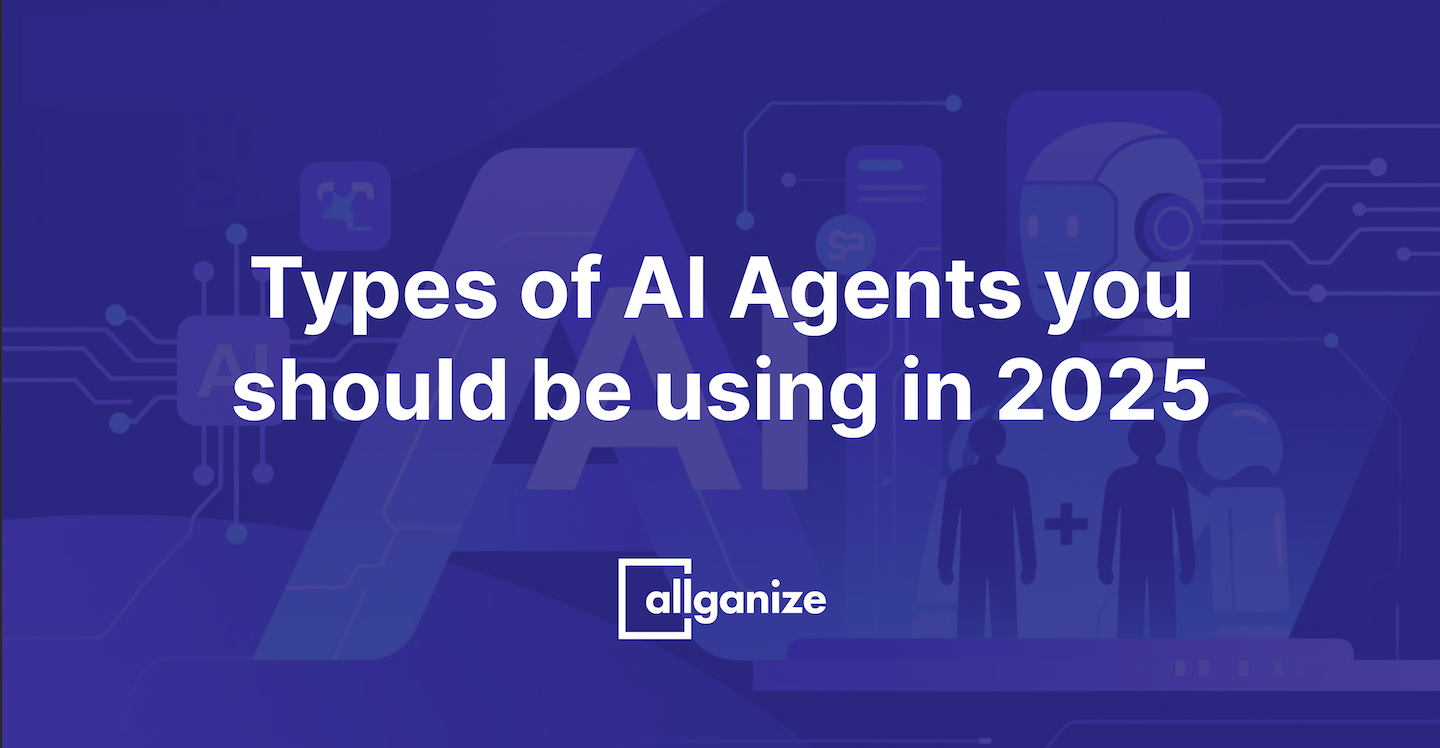
Industries


Customer Stories


Company


Global
Global Sites
Select a region and language
Request a Demo

Explore the different types of AI agents and their real-world applications. Learn how AI agents are revolutionizing industries with cutting-edge AI solutions.
Artificial Intelligence (AI) is transforming how we interact with the world. From simple tasks to complex decisions, AI solutions are becoming more sophisticated and integrated into our daily lives. But what exactly are AI agents, and how do they work? This article explores the different types of AI agents, their roles, and real-world examples to help you understand their importance in today's and tomorrow's technological landscape.
At its core, an AI agent is a program that perceives its environment through sensors and acts upon it using actuators. It processes input data and makes decisions to achieve specific goals. These agents can range from simple programs that follow predefined rules to complex learning systems that adapt over time. They share several core characteristics: autonomy (operating without constant human input), reactivity (responding to environmental changes), proactivity (taking initiative to reach their goals), and social ability (communicating and collaborating with other agents or humans)(MIT CSAIL).
The importance of AI agents lies in their ability to automate and optimize processes across various domains. They handle repetitive tasks with precision, reducing human error, and can adapt and make decisions faster than humans in dynamic settings. According to Accenture, AI agents are key to creating self-optimizing enterprises by enhancing responsiveness and resilience.
Companies like Allganize develop and deploy these agents for over 300 enterprise customers globally, with extensive experience in sectors like banking, insurance, manufacturing, and energy.

AI agents are categorized by their intelligence and complexity, from the most basic to the most advanced.
Building and deploying AI agents presents several challenges: access to quality data, maintaining ethical use, ensuring fairness, and managing security.
To address this, Allganize’s No-Code Agent Builder empowers non-technical users to create AI-driven workflows with governance and compliance built-in. This tool allows subject matter experts (SMEs) to design and control enterprise agents without writing a single line of code crucial in industries with strict regulations like finance or healthcare.
The platform also supports cloud and on-premise deployment models, enabling companies to maintain ownership over data and protect sensitive intellectual property.
As we look ahead, the role of agents will expand into collaborative ecosystems, where multiple AI systems work in concert across domains. The World Economic Forum highlights multi-agent collaboration as a key driver for next-generation innovation in sectors like manufacturing, logistics, and sustainability.
Additionally, integration with technologies like the Internet of Things (IoT) and augmented reality (AR) will enable agents to function in physical spaces, opening opportunities in smart cities, personalized medicine, and adaptive learning.
AI agents are a fundamental part of modern technology, driving solutions from simple automation to complex, high-stakes decisions. They are already seamlessly integrated into our daily lives, from smart home devices to digital assistants, making our routines more convenient and efficient. As AI agents become more sophisticated and their capabilities expand, it's essential to stay informed about their advancements and implications. The journey of AI agents is just beginning, pointing to an exciting future of innovation and discovery.
Lorem ipsum dolor sit amet, consectetur adipiscing Aliquam pellentesque arcu sed felis maximus
Lorem ipsum dolor sit amet, consectetur adipiscing elit. Curabitur maximus quam malesuada est pellentesque rhoncus.
Maecenas et urna purus. Aliquam sagittis diam id semper tristique.
Lorem ipsum dolor sit amet, consectetur adipiscing elit. Curabitur maximus quam malesuada est pellentesque rhoncus.
Maecenas et urna purus. Aliquam sagittis diam id semper tristique.
Lorem ipsum dolor sit amet, consectetur adipiscing elit. Curabitur maximus quam malesuada est pellentesque rhoncus.
Maecenas et urna purus. Aliquam sagittis diam id semper tristique.

Stay updated with the latest in AI advancements, insights, and stories.